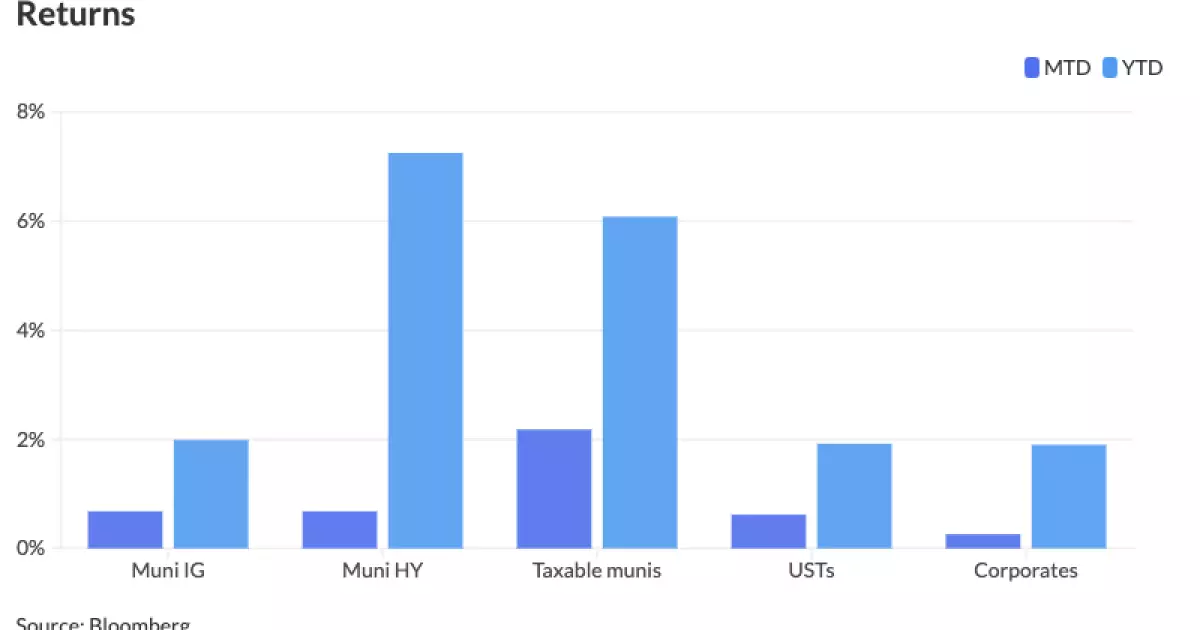The landscape of the municipal bond market remains dynamic, characterized by a mixture of stability amid ongoing fluctuations in yields and issuance. As the financial environment shifts, investors are keenly observing trends and adjusting their strategies to capitalize on emerging opportunities. This article explores recent developments in municipal bonds, the influence of U.S. Treasury yields, and forecasts for the near future.
Over the past week, the municipal bond sector experienced a combination of steadiness and firmness, with select areas demonstrating resilience against a backdrop of declining U.S. Treasury yields. As Treasury yields fell by as much as five basis points, the municipal market responded, albeit with some lag. According to strategic reports from Birch Creek, the performance of municipal bonds was not as robust as that of Treasuries for the second consecutive week, attributed in part to a new issuance calendar that featured nearly $14 billion in offerings. This relatively high volume of new issues has diverted investor focus away from existing munis, creating a market environment that warrants careful monitoring.
Despite the recent underperformance, the overall trajectory for municipal bonds remains positive at the start of September. This asset class returned 0.68% thus far this month and boasts a year-to-date return of 1.99%, which marks the strongest performance since October of the previous year, according to insights from Jason Wong, a municipal vice president at AmeriVet Securities. As speculations arise around expected interest rate cuts from the Federal Reserve in their upcoming September meeting, market analysts, including Wong, predict that this could further bolster the municipal bond market.
Investors are continually drawn to the attractive yields offered by municipal bonds. However, as highlighted by Wong, a comparison of munis against their Treasury counterparts shows that they remain relatively expensive, complicating the investment landscape. The muni-to-Treasury ratios reflect this scenario, with figures ranging from 66% for two-year notes to 89% for 30-year bonds based on the latest reports from municipal market data providers. These ratios illustrate the differential in yield advantage that municipal bonds hold, and they can influence investment decisions significantly.
Despite the yield discrepancies, inflows into municipal mutual funds continued unabated, marking the 11th consecutive week of positive flows with an influx of $1.258 billion. This sustained investor interest underscores a growing confidence in the market, fostering a competitive bidding environment for new issues, which often witness modest oversubscriptions. Pat Luby, head of municipal strategy at CreditSights, notes that many issuers are strategically timing their debt issuance in light of anticipated Federal Reserve actions, with last week’s issuance volume reflecting a significant uptick—65% above average levels.
Looking ahead, the municipal bond market is set to see increased issuance. The coming weeks are poised to host several prominent offerings, including notable deals exceeding a billion dollars from entities such as the Texas Water Development Board and the Los Angeles Unified School District. Such heavy issuance is expected as municipalities prepare for upcoming elections and tap into favorable market conditions.
The implications of these developments extend beyond pricing strategy to broader economic reflections; they symbolize a proactive response to evolving financial conditions. The lull in new issuance has been attributed in part to speculation around Federal Reserve policy shifts, with many issuers opting to delay borrowing until clearer paths emerge post-rate decisions. However, with multiple large-scale deals on the horizon, it suggests a confidence among municipalities in leveraging current market conditions, aiming for strategic growth and investment across the spectrum.
The current state of the municipal bond market is emblematic of broader fiscal trends, characterized by investor adaptability and strategic positioning amid fluctuating yields. As the Federal Reserve prepares for potential rate cuts, the intersection of attractive yields, investor inflows, and substantial new offerings sets the stage for continued developments within municipal bonds.
In a market environment where rates can shape investment strategies, both current and prospective investors must navigate these dynamics judiciously. Opportunities abound for those poised to capitalize on prevailing trends, while the overall picture remains one of cautious optimism as all eyes remain focused on forthcoming Federal Reserve decisions and their ramifications within the municipal landscape.

